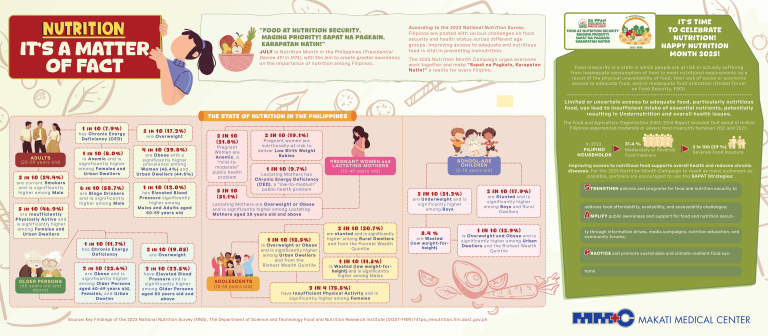There is a point in a boy’s life where they undergo a “rite of passage” or a “transformation” from boy to man. It is during this prepubescent stage that they experience the process of circumcision.
The procedure has been around for millennia, becoming a long-standing tradition in society. However, while it is common for teenage boys to be circumcised, some parents opt to have their son go through the procedure between the ages of 8 and 12 or right after birth.
This has sparked discussions between doctors and parents alike to determine when is the best time for circumcision and if one is more beneficial than the other. But first, what is circumcision, and its benefits?
What is Circumcision?
Circumcision is relatively common in the Philippines. It is a medical procedure that removes the foreskin, which covers the head of the penis. If someone is expecting a baby boy, they may be thinking of when the right time is to have their son circumcised.
Despite it being a medical procedure, the reason for having a boy circumcised involves several factors, such as religion, medical and social status, and hygiene, among others. The question here is when the best time is to have a boy get circumcised. Is doing it after birth any different from when they have it done when they are older?
The following sections discuss the benefits and facts surrounding this topic while comparing circumcisions at birth and later in life.
Benefits of Circumcision
From a medical perspective, parents do not need to have their son circumcised. With that said, many parents opt to have their son go through the procedure for health reasons. Below are some of the benefits that circumcision provides:
1. Lowers the risk of urinary tract infection (UTI)
UTI causes several issues when urinating with immense pain in the abdominal area. It can cause severe problems to the kidney, which can lead to sepsis, a potentially fatal condition of the body in response to an infection. Babies are susceptible to UTIs and opting for circumcision can decrease the risk of contracting it.
2. Prevents penile cancer
Although penile cancer is a rare form of cancer, it is still something that people should be aware of. Any cancer has the potential to be fatal, and lowering its risk is a significant health benefit, which circumcision does in this case.
3. Reduces risk of HIV and other STDs
Infection from the Human Immunodeficiency Virus (HIV) can be severe if left untreated, leading to Acquired Immunodeficiency Syndrome (AIDS), which still has no cure. It is something that everyone wants to protect themselves from, so practicing safe sex is essential.
Fortunately, circumcised men have a lower risk of contracting the deadly disease along with other sexually transmitted diseases (STDs), but that does not mean they are immune to it.
4. Decreases the risk for skin conditions
Skin conditions can occur on the penis. A skin condition like phimosis, where the foreskin cannot be retracted, can affect boys who are not circumcised. It can occur naturally or by scarring, so circumcision is something worth considering.
5. Reduces the number of bacteria
Numerous bacteria can live under the foreskin. These bacteria are the ones that cause UTIs. Since circumcision is the removal of the foreskin, it reduces the number of bacteria living there, lowering the risk for any infection.
Circumcision at Birth
Some parents consider having their newborn son undergo circumcision right after birth. This is quite common in Western countries, but how is it done, and why is it preferred?
Circumcision at birth is similar to how teenage boys undergo their circumcision except without the pacifier. A baby for circumcision will require a pacifier that has been dipped in sugar water to help ease the newborn throughout the procedure.
Doctors place the baby on their back and use medical bands to restrain them. The doctor will then apply an antiseptic or pain reliever cream to the base of the penis while using three kinds of clamps for the procedure.
The doctor will attach one of the clamps and cut off the excess foreskin. Antibacterial ointment will then be applied with gauze wrapped around the area. The procedure lasts around ten minutes, and the baby can go home.
People in the West prefer this because it reduces the risk of UTI during the baby’s first year of life when they are most susceptible. The effects of circumcision later in life is also a significant factor. Others may do it for religious or cultural reasons.
Circumcision Later in Life
Circumcision in the Philippines, known as “tuli,” more commonly happens later, just before the boys hit their teens. The origin of the practice is still unknown, but it may have come from Islamic customs before Christianity arrived in the country.
A person called the “manunuli” performs the procedure. Boys will soak their penises in a river for over an hour to soften the foreskin. The foreskin is then stretched on a wooden base with another piece of wood that drives the knife to detach the foreskin. Guava leaves are then applied to the wound to reduce blood loss.
Some of these teenagers willingly go through tuli to avoid being called “supot.” Although it directly translates to “uncircumcised,” the word has been associated with cowardice and ineptitude, making it an insult to many.
Today, medical practitioners conduct the procedure by applying local anesthesia, but the traditional way is still being done in rural areas.
Health and Hygiene is What Matters
Whether a boy gets circumcised or not, practicing proper hygiene is crucial for living a healthy life. Having a dedicated routine prevents infections from happening and is a necessary practice that people need to adopt for a healthier life.
Circumcision offers health benefits worth considering, and regardless if it happens during the teenage years or after birth, it is a safe practice with little to no risks.
For circumcisions, pediatric care, and urological concerns, Makati Medical Center offers world-class health services with state-of-the-art equipment. The hospital has board-certified and highly skilled Pediatricians and Pediatric Surgeons to look after children, providing screenings, maintenance, and care while providing an array of services for adult patients. Visit Makati Medical Center’s website for more information.











